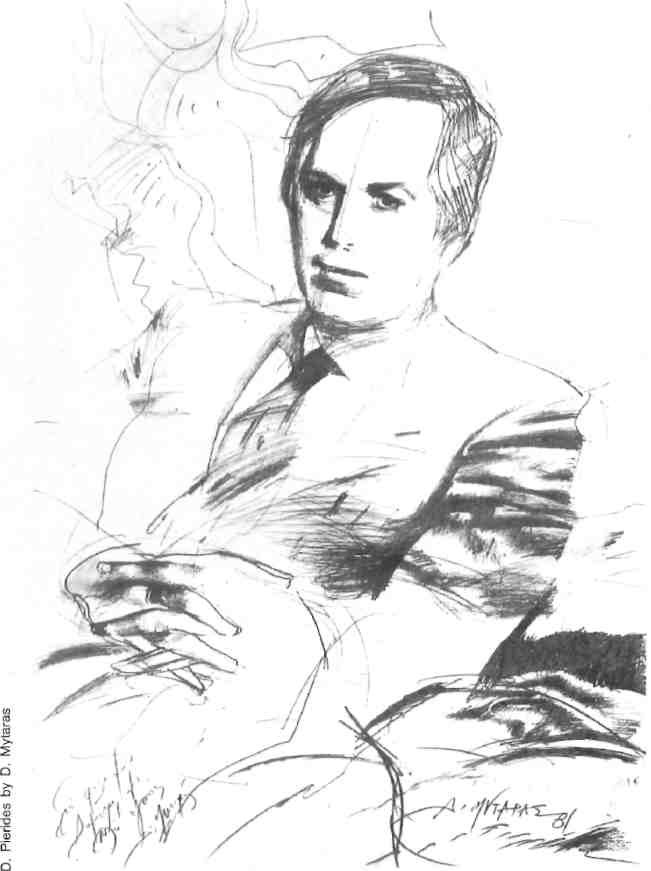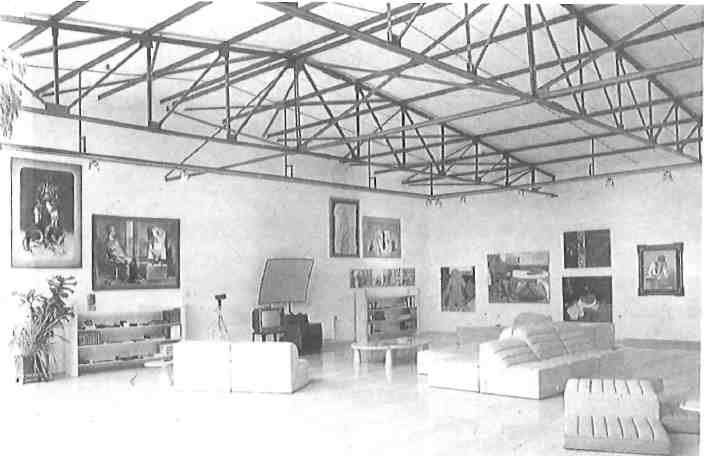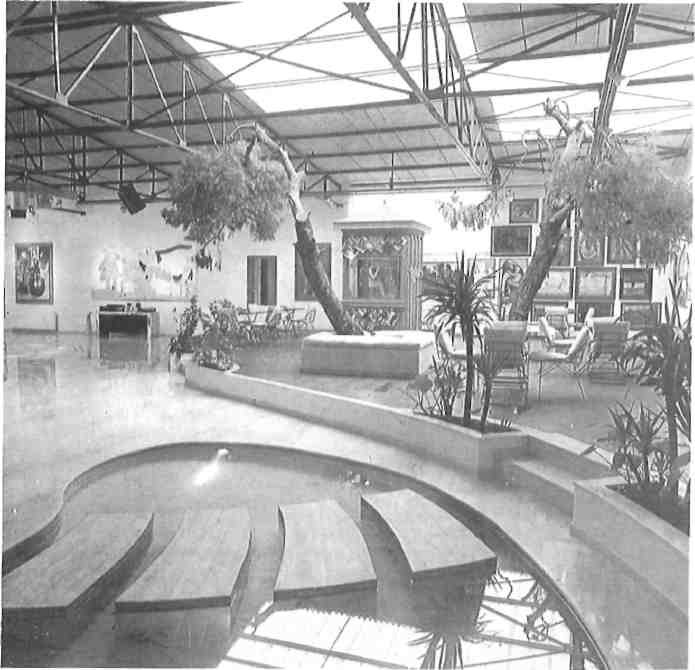
Demetris Z. Pierides opened his museum in Glyfada in 1980, six years after leaving Cyprus. The reason for his settling in Greece was the invasion of his native island in 1974 and the seizure of Famagusta where Pierides had his headquarters for shipping, tourism and a considerable art collection now lost, although he hopes not forever.
The museum in Glyfada is impressive, set in a lovely garden beside his home, a villa built in the 1920s. Over the years the collection has grown in size to 920 pieces of sculpture, ceramics, bronzes, and paintings. The exhibitions are rotated every three months, so each piece gets a viewing and an airing on a regular basis. The gallery itself is spacious, high-ceilinged and well-lit with some 150 pieces on display at any given time. One gets the impression that the museum is his whole life, and maybe spiritually it is, but he spends mornings working in the reactivated shipping business, based now in Piraeus, and afternoons at the gallery.
The gallery is open “all the time”, as he says. He has a large staff and last year there were some 60,000 visitors. All you have to do is ring the bell and you are in. When he arrived, in the early 1970s, Pierides noticed there was no modern art collection open to the public in the capital, so he started gathering the works of contemporary Greek artists and sculptors. Collecting systematically, he set about creating a place which the public would wish to visit. At the same time, he completed “the triptych of family museums: archaeological, medieval, folk and contemporary art. So it is 9000 years of art in my family’s three museums,” he says, Pierides remembers being practically born in a museum, since his family owned them. Fortunately, in Larnaca, where his mother still lives, the museum is intact. Not so the collection in Famagusta. His company lost six hotels, and a shipping business as well. His offices were bombed, his home and his collection looted. Pieces from time to time turn up somewhere in Europe, and through dealers they are repurchased by the Pierides Foundation.
Pierides’ mother is chairperson of the Foundation and lives in the same old house where the collection is exhibited. The collection in Larnaca is archaeological, its earliest pieces date from 7000 BC, then descend through the Neolithic and Bronze ages down to the Roman and Byzantine periods of later history and continues into medieval times. The collection is considered one of the finest private archaeological collections in the world. There are 3000 unique pieces, and most importantly, they all intact. Asked if he felt proud to have achieved a collection which has so significantly added to the family’s treasures, he replied “I feel I am performing a social duty, fulfilling a dream, maybe.” He is not, in his own words, “ambitious to be amongst the rich in the cemetery.”
The young curator of the Pierides Museum in Glyfada is Yiannis Kolokotronis, a direct descendant of the War of Independence hero. (He is his great, great grandson.) Now curator for four years, he previously studied at Athens University, then Bristol and is awaiting the publication of his doctoral thesis on the Still Life. He loves his job, enjoys the change and the opportunity to choose some of the pieces. “It is not that you gain experience,” he says, “it is what you see that is important.”

When asked how he chooses works of art for his collection, Pierides replies: “My criteria are personal, but at the same time I accept pieces that I do not like quite so well as others. Since I am creating a museum, a whole spectrum of art is necessary.”
Indeed, the scope of his collection is very wide. Works by every well-known Greek contemporary painter are on view, and the collection of sculptures is broad and varied. There is a comprehensive exhibition of engravings and his passion for ceramics is well displayed.’
The Pierides family originally came from Zakynthos. They became bankers in Venice and then moved to Cyprus in 1772. The Pierides have always been diplomats, and in 1992 the family celebrates a century of representing Sweden on Cyprus. Pierides, who was born in 1937, studied Economic Sciences and Law at the University of Lausanne. He became Consul of Sweden in Nicosia in 1968 and entered the family shipping business and the banking firm of Z.D. Pierides which was established in 1860. Today Pierides is President, or Member of the Board, of 48 companies in shipping, insurance, hotels, tourism agencies, manufacturing and imports.

After the death of his father, Zinon, in 1967, he followed in the footsteps of his ancestors by continuing the family interest in the archaeological museum, a collection which had been begun in 1839 by his great-great-grandfather. A century and a half later, it comprises 1850 pieces including some 650 acquired by Demetris Pierides himself. In 1974 the Pierides Foundation was established to protect and enlarge the collection.
Pierides is an art lover* with a passion for Cyprus, proud of his heritage, and very active in many aspects of academic, business, art and education. He has organized several seminars on art and invited guest lecturers from all over the world. He has sponsored numerous publications on art and archaeology and has funded the repatriation of works which have been discovered in Europe. In this task, the Pierides Foundation is assisted by the Leventis Foundation of Cyprus and London.
Demetris Pierides was elected to a four-year term as Governor of the European Foundation of Culture in 1987. Its headquarters are in Amsterdam and its President is Princess Margarita of the Netherlands. Pierides is also on the boards of various organizations in Greece: The Cultural Centre of the Municipality of Athens, The Maria Callas Athenaeum Foundation, etc. He is associated with many museums and galleries abroad, such as the Victoria and Albert Museum, the Tate Gallery and the Wallraf-Richartz Museums.
The Museum of Contemporary Art is frequently used for fundraising benefits and Pierides is delighted that as many as 66,000 visitors passed through his galleries last year. Parts of the collection have travelled to Cyprus, France, Switzerland, Sweden and to cities in Greece. If he continues collecting at the rate he has, Pierides will be needing a larger museum within a few years, and one imagines he will achieve this goal.







